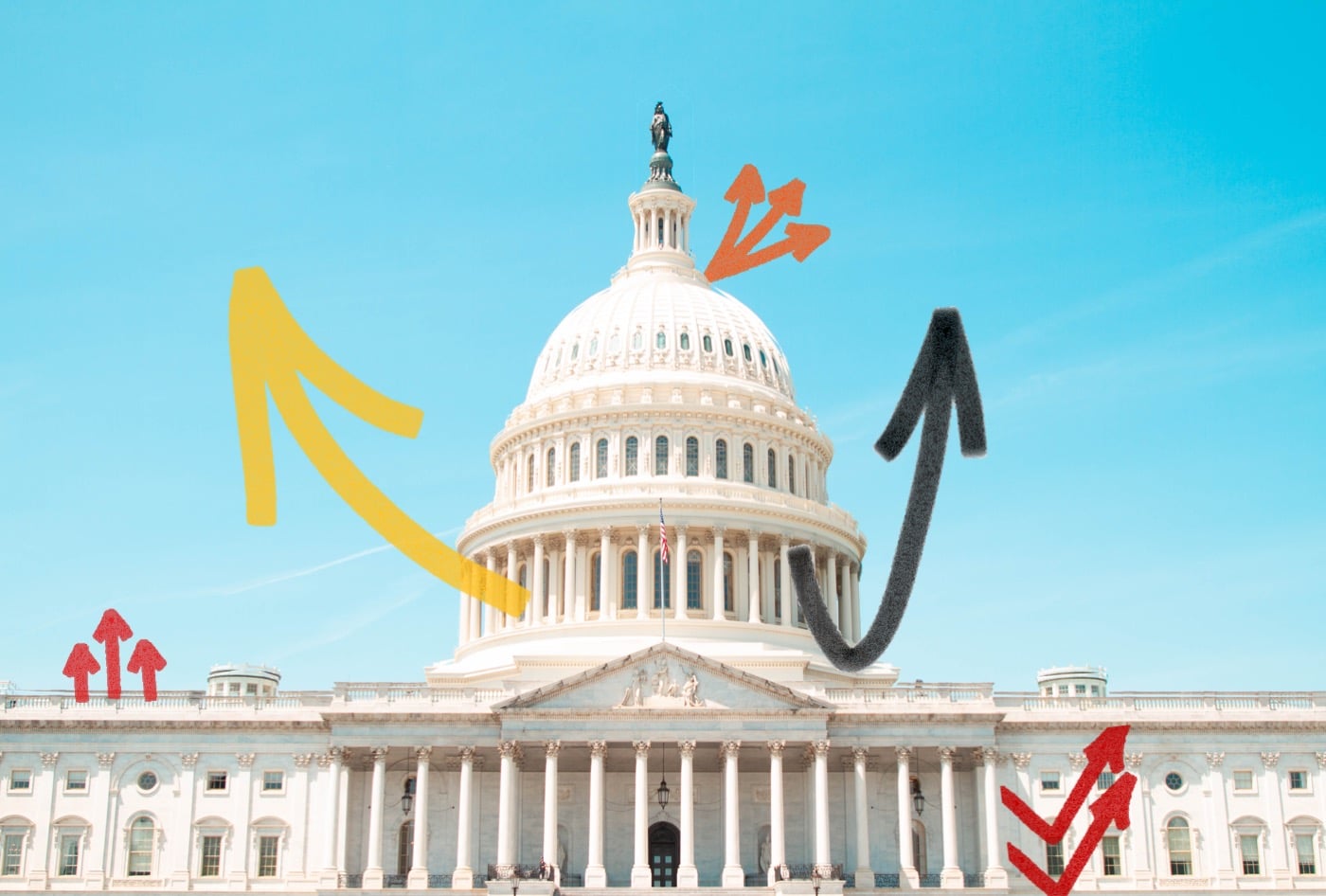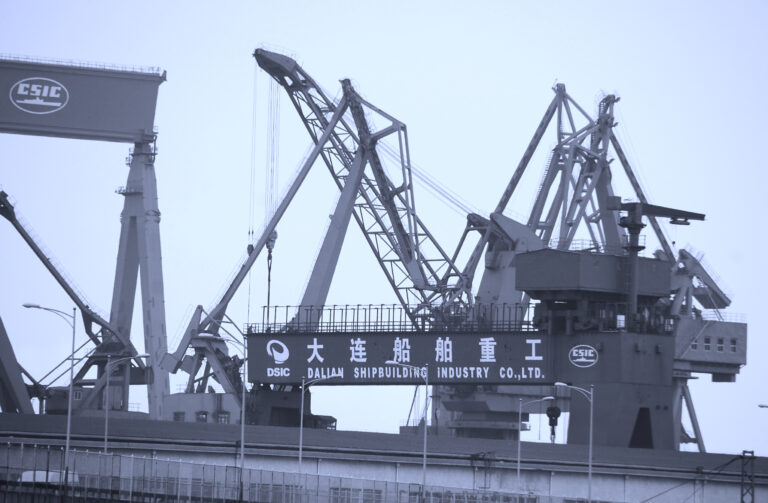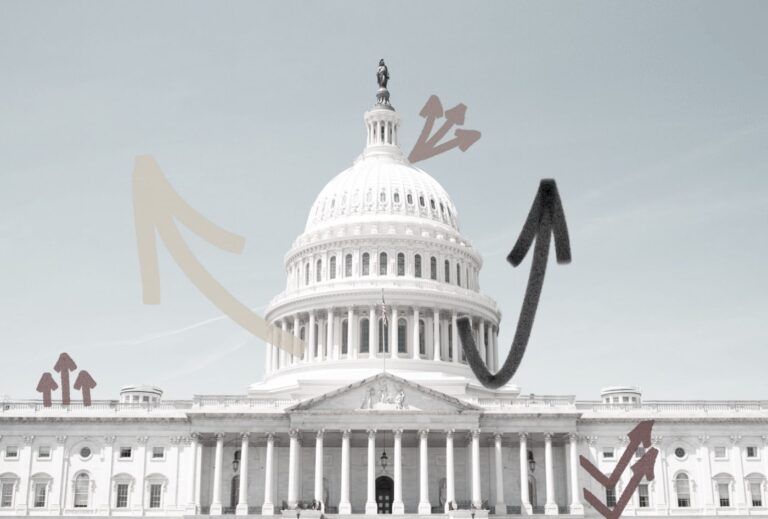When President Joe Biden campaigned last year under the slogan “build back better,” he signaled a break with decades of economic thinking that prescribed a limited government role in the economy. As the New York Times put it in April, Biden’s proposal to cut carbon emissions in half by 2030 is “perhaps the greatest bet in recent American history on what economists call industrial policy, the idea that the government can steer the development of jobs and industries in the economy.”
The United States is not alone. Countries throughout Europe and elsewhere are increasingly turning to the view that governments should use industrial policy to tackle grand challenges. Recognizing this trend, the International Monetary Fund issued a report in 2019 called “The Return of the Policy That Shall Not Be Named: Principles of Industrial Policy.”
Why could this policy “not be named”? The short answer is that industrial policy was one of the many casualties of an international shift in economic policy that began in the 1980s and flourished under the administrations of Ronald Reagan in the United States and Margaret Thatcher in the United Kingdom. The emergent sensibility—what we now call neoliberalism—was codified in 1989 in the Washington Consensus, which championed privatization, deregulation, and free trade. Along with these central pillars came an emphasis on low budget deficits, independent central banks focused on low inflation, and the liberalization of trade and foreign direct investment. This outlook was deeply confident in markets and deeply skeptical of government action, beyond the state’s limited role in enforcing property rules and investing in education and defense. “On the basis of an exhaustive review of the experience of developing economies during the last thirty years,” the World Bank summed up in the early 1990s, “attempts to guide resource allocation with nonmarket mechanisms have generally failed to improve economic performance.”
Today it is precisely those “market mechanisms” that appear not to have delivered on their promise. An equally exhaustive review of the experience of several advanced economies during the last few decades—from the 2008 financial crisis, populist challenges to globalization, and vast increases in economic inequality to decaying infrastructure, climate change, and the broader pursuit of short-term profit at the expense of long-term investment—has badly tarnished the reputation of neoliberal market fundamentalism. Under this regime, modern capitalist markets have proven themselves unable to create an even distribution of wealth and income, ecological sustainability, affordable shelter and health care, and a sufficient number of high-quality middle-class jobs. Amidst this policy crisis, industrial policy is making a comeback, shaping high-level discussions at the intersection of trade policy and economic growth on subjects from artificial intelligence to climate change.
Yet how exactly industrial policy ought to be implemented remains very much an open question. Given that the U.S. government has been out of practice at industrial policy for four decades, some observers have called for a cautious, incremental approach. We think this is exactly the wrong strategy. Industrial policy should be ambitious in tackling the most serious challenges facing the world today. But precisely because many of these challenges are so expansive and open-ended, we also cannot simply return to the industrial policy of the postwar era, which tended to focus on more narrowly defined technological goals and specific sectors. We need a new vision, one that draws from the industrial policy of the past while responding to the unique conditions of the present.
That is exactly what we aim to sketch here. By undertaking well-defined missions, investing in a wide range of sectors, and nurturing new economic landscapes, policymakers can steer the overarching course of economic growth while leaving it to private enterprise to fill in the details. Indeed, a great deal of success is already being made in this direction, from Germany’s impressive green energy transformation to Sweden’s decarbonization of its food system.
This framework—what we call a mission-oriented approach to industrial policy—rejects many of the basic premises of market fundamentalism, especially its extremely limited vision for government. At the same time, it recognizes the risks, both political and economic, of excessively top-down planning by an overbearing state. Charting a course between these extremes, mission-oriented industrial policy instead uses government action to incentivize economic activity in the direction of ambitious social goals—whether reducing inequality, fostering sustainable development, or arresting climate catastrophe. If we are to solve such problems, the last four decades have shown, we must embrace an active role for government in creating and shaping new markets—not just in regulating them, or intervening when they fail.
If firms are confident about future technological and market opportunities they will invest and seek to innovate; and conversely, if they are not confident, they will not invest. Any industrial strategy should therefore aim to stimulate demand and increase business expectations about where future growth opportunities might lie.
Market fundamentalism rejected these ideas. Founded instead on neoclassical economic theory, this approach emphasizes that individuals pursuing their self-interest in competitive markets yield efficient outcomes. According to this view, government action should be limited to correcting isolated market failures that result in inefficiencies. The causes of such failures, according to neoclassical theory, include information asymmetries; transaction costs and frictions to smooth exchange; non-competitive markets (monopolies, for example); externalities, whereby an activity harms another agent not directly connected with the market transaction (as when carbon emissions from cheap gas in a rich country cause climate change and economic dislocation in a poor country); and coordination and information failures hampering investment (say, in the absence of information about profitability of investments in green energy).
Neoclassical economic theory was also applied to governments in the field of public choice theory. The people involved in policymaking and policy execution—voters, bureaucrats, politicians—were modelled, like economic actors, as self-interested rather than public-spirited. This led to a conception of public organizations as engaging in “bureau-maximizing” behavior, whereby departments and agencies look after their own survival rather than the common good. Even when there are clear examples of inefficiencies due to market failure, government intervention may not deliver a more efficient outcome—indeed, the self-seeking behavior of elected officials and bureaucrats might lead to government failure, a cure even worse than the disease.
This perspective—emphasizing a limited role for government in response to market failures while at the same time warning about the risks of government failure—came to dominate industrial and innovation policy debates in late 1980s. This orientation did allow for some government activity, but of a limited nature. Certain elements of innovation policy, in particular early-stage research and development, can be considered public goods, and thus a case could be made for government stepping in where markets failed to provide for them. Most governments invest in basic science, for example, as there are no market incentives for private firms to do so. Intervention further downstream in the innovation chain has been more contentious. Should the government invest in applied research, or should that be left to private firms? The market and government failure perspective takes the latter view, based on the claim that the private sector is the more efficient innovator in bringing goods to market. From this perspective, private firms possess greater entrepreneurial capacity under the pressure created by competition. By contrast, the state is viewed as risk-averse and in danger of creating government failure if it becomes too involved by “picking winners”—that is, by supporting specific firms, technologies, or sectors.
As a result of these views, the industrial and innovation policies of the past have largely been horizontal rather than vertical. Instead of articulating system-wide missions and fostering the economy-wide learning required for their achievement, the role of the state has been confined to leveling the playing field for commercial actors—mostly through supply-side inputs such as better skills or the removal of market frictions—and then getting out of the way. At the macroeconomic level, the market failure approach to industrial policy limits the role of the state to “stabilization”—mitigating the impact of the business cycle—and remains neutral about which markets are being created. Governments have accepted externally imposed rules-based frameworks limiting discretionary interventions. Fiscal policy is constrained by the “discipline” of tight budget deficit targets, and central banks are limited by tight mandates oriented toward price stability above and beyond other goals and are operationally independent of governments and thus not susceptible to political capture.
The financial and pandemic crises of the last fifteen years and escalation of the climate and environmental emergency make it clear that such an approach is not enough. We need a different approach to policy making: a mission-oriented framework that focuses government action on solving fundamental challenges rather than waiting for the solution to trickle down through competitive market forces. Such an alternative approach is built around four key principles that take inspiration from Karl Polanyi’s description of the “embeddedness” of the economy in society and culture, weaving together the private sector, the state, and civil society in a collective effort to serve the public good.
First, the state should do far more than passively react to market failures. It should play an active role in creating and shaping markets in the direction of well-defined missions, using the full arsenal of policy instruments at its disposal—including public investment, regulation, demand-stimulating procurement, macroeconomic policy, and education and skills training.
Second, building the state’s capacity and willingness to make high-risk investments depends on developing dynamic public sector organizations that welcome experimentation and the possibility of failure, all while creating the conditions for cross-sectoral learning and progress.
Third, assessing public investment and evaluating mission success requires new measures of progress in place of those used by the market failure approach, which emphasizes cost-benefit analysis, the efficient allocation of resources in the short term rather than over the long term, and tightly constrained budgets.
And fourth, sustaining successful industrial policy requires rethinking the way risks and rewards are distributed between the state and the private sector to ensure the government is rewarded for its successes.
We discuss each of these principles in turn. Together, they show how we can move policy from the existing support-and-measure approach—find the market failure; fix it with a support instrument; measure the impact—to a lead-and-learn approach: one that is based on creating and shaping markets using a variety of policy instruments with open-ended impact horizons and learning through wider social engagement and coordination.
Steering economic growth
A key factor in past market-shaping innovation policies has been setting a clear direction for problem solving. However, unlike the classical “moonshot” mission-oriented policies of the Cold War era, modern missions focus on broad social goals rather than narrow technological objectives—goals that fall at the intersection of technology and public services and that require changes across various economic and policy sectors. Germany’s Energiewende policy, for instance, aims to combat climate change, phase out nuclear power, increase energy efficiency, and improve energy security by substituting imported fossil fuels with renewable sources. This massive effort is as much a social and behavioral agenda as a technological one, requiring activity across many different sectors.
New policies tackling grand challenges should be broad enough to engage the public, enable concrete missions, attract private investments in multiple sectors , and remain focused enough to involve industry and achieve measurable success. By setting the direction for a solution, missions do not specify how to achieve success. Instead they stimulate the exploration of different approaches to achieving the objective, provoking entrepreneurial self-discovery.
To illustrate the mission approach, take the UN’s Sustainable Development Goal 14: “Conserve and sustainably use the oceans, seas and marine resources for sustainable development.” This broad goal could be broken down into various missions—for example, a plastic-free ocean. Importantly, the mission selection should not be seen as a top-down or technocratic goal-setting; it needs to rely on substantive public engagement. For instance, Swedish innovation agency Vinnova ran workshops with more than 400 organizations in order to translate grand challenges into concrete missions, involving a wide range of actors from pupils to the prime minister. Once we have set our hypothetical mission to make oceans plastic free, this mission in turn could stimulate—through a range of public investment programs—a wide range of research and innovation: methods for clearing plastic waste from oceans or in reducing the use of plastics; innovation in new materials; research on health impacts from micro-plastics, behavioural research and innovation to improve recycling or drive public engagement in cleaning up beaches. Each of these areas can be broken down further into particular projects. But crucially, there is no single answer how to clean up the oceans, and it would require international coordination and joint investment.
The mission-oriented approach to policy thus cuts through the state-market dichotomy that dominates current discussion on economic efficiency and value. Too much top-down control can stifle innovation, while too much bottom-up freedom can blunt impact and drift away from the overarching goal. The solution is to use the government to set the basic direction of economic activity, driving cross-sectoral investments while leaving the details to multiple bottom-up efforts—some of which will inevitably fail.
Shaping the market in this way will require not just public investment strategy, but also wider institutional features of markets, from the regulatory framework (e.g. environmental standards) to the supply of skills, to the creation of demand for new products and services (e.g. through government procurement). Typically, these policy areas are governed by separate entities and regulations that do not complement each other. Vinnova offers an example of a more integrated model. One of their missions is to decarbonize food—as it is a significant source of carbon in many economies—and in order to do so they set the goal to make every school meal in Sweden healthy and sustainable. The Swedish government thus supports sustainable innovations throughout the food value chain, from energy production and transportation to packaging and waste management.
Mission-oriented efforts also require rethinking macroeconomic policy. Modern market failure–influenced macroeconomic policy places too much weight on balanced budgets, inflation targeting, and maintaining market neutrality at the expense of demand creation and capital allocation to support missions.
On fiscal policy, current discussions tend to start from existing fiscal constraints—how can we pay for it?—rather than from policy goals and desired outcomes. Typically, governments try to discipline spending by adopting fiscal frameworks that target a certain ratio of borrowing relative to current or past GDP. This approach neglects two important facts. First, deficit spending may have economic multiplier effects that enable growth to increase at a faster rate than borrowing, reducing the debt-to-GDP ratio over time. Second, unlike households or firms, governments with sovereign currencies and central banks cannot go bankrupt; ultimately, they are the currency issuer rather than taker. The government deficit should be viewed as an indicator of demand in the economy and will fluctuate with changing confidence of the private sector and the business and financial cycle. This is not to say that the inflation should be ignored; an economy may indeed hit capacity constraints, which may require cutting spending or raising taxes. But budget deficits should in general have a less prominent role in fiscal policy decisions than missions.
Monetary policy could also be leveraged more effectively to support missions. Since the global financial crisis of 2008, central banks have increasingly used a range of unconventional measures, including quantitative easing and various other short- and longer-term liquidity programs, to stimulate the economy and hit inflation targets. The European Central Bank (ECB), for example, currently holds €310 billion worth of corporate bonds, equivalent to 20 percent of the entire Eurozone bond market. To maintain their independence from government, central banks have adopted a policy of market neutrality to determine such asset purchases. By mirroring the sectoral composition of the corporate bond market, the ECB’s portfolio also mirrors the failure of credit rating agencies, as well as the broader failure of financial markets, to account for the financial risks associated with dependencies and impacts upon nature and the climate.
Given the size and signaling power of central banks, quantitative easing purchases provide an excellent opportunity to re-channel financial flows more strategically toward more environmentally sustainable activities. Criteria used by central banks to purchase financial assets should be adjusted to incorporate the climate- or nature-related risk associated with the companies being financed. (Loans to fossil fuel companies, for example, could be classified as highly risky given the risk of stranded assets.) With regard to low-carbon energy, the International Energy Agency estimates that investment would need to swell by a factor of 2 by 2030 in order to meet long-term sustainable development goals. The expansion of central bank interventions into markets presents an excellent opportunity to do so.
Developing organizational capabilities
A prominent criticism of industrial policy is that it gets deflected from its large aspirations by various kinds of corruption, government capture, and simple public sector incapacity. These are legitimate concerns. A key element of a mission-oriented approach is establishing public sector organizations with the skills, resources, and capabilities needed to succeed in implementing transformative policies.
One dimension of this work requires rethinking the structure of public–private partnerships. Typically, such arrangements limit the public role to de-risking the private part. This conservative strategy minimizes the public risk of picking losing projects but does not necessarily maximize the probability of picking winners, which requires a portfolio approach for public investments. In such an approach, the success of a few projects covers the losses from many projects, and the public organization in question learns from its loss-making investments. Here, matching failures and fixes is less important than having an institutional structure that ensures that there will be enough rewards to cover the losses, and that losses become lessons for improving and renewing future policies.
In 1982 economists Richard Nelson and Sidney Winter argued that public policy needed to be matched by bold new organizational structures in the public sector. “The design of a good policy,” they wrote, “is, to a considerable extent, the design of an organizational structure capable of learning and of adjusting behavior in response to what is learned.” Unfortunately, very little research has heeded this call. Within the scholarship of public policy and innovation, there is no public sector analogue of the rich literature on the “dynamic capabilities of the firm.” The closest we have come is in discussions of the “developmental state” and the successes of East Asian economies such as those of South Korea and Taiwan. These discussions focus on the need for the state to recruit talent by making government work financially competitive or prestigious. Missing from these discussions are the concrete institutional and organizational forms that ensure success over the long term. As the COVID-19 pandemic has shown, the public sector bears responsibility for the long-term resilience and stability of societies through developing and nurturing long-term capacities, and for agilely responding and adapting to changing environments through the dynamic capabilities nested in said capacities.
First, a market-shaping role requires robust state leadership and engagement. Missions can all too quickly become either just fashionable labels on business-as-usual practices or too rigid top-down planning exercises. Developing the capacity to engage a wide range of social actors and to show leadership through bold vision are vital at a time of what scholars have called a rising “democratic deficit” in many developed countries. Moreover, some grand challenges will inevitably contest the way of life as we know it. Capabilities that foster popular engagement align the mission-setting capacities of the state with potential for public contestation and adaptability.
Second, in order to develop coherent policy mixes of instruments and funding, coordination and experimentation capabilities are essential. As these missions are not just about technological solutions but also have strong sociopolitical ambitions, experimentation matters more than ever. Equally important, as we dicuss in the next section, are evaluation capabilities that can integrate user research, social experiments, and system-level reflection.
Third, administrative capabilities need to rely on a diversity of expertise and skills, from engineering to human-centric design. Organizational forms that mix unrelated knowledge areas and organizational fluidity seem to be fundamental for managing new missions.
Building new tools for evaluation
One of the key dynamic capabilities are the ways to evaluate economic policy initiatives in a way that facilitates learning and innovation with government. The market failure framework emphasizes cost-benefit analysis, short-term allocative efficiency, and constraint-driven budgets. But each of these tools has serious limitations that will need to be rethought under a mission-oriented approach.
Take cost-benefit analysis first. In this framework, costs—including the costs of potential government failure—are usually defined by their opportunity cost: the value that reflects the best alternative use a good or service could be put to (include a do-nothing/business as usual option), with all else (including all other prices) assumed equal, and with market prices usually the starting point for the analysis. Policy evaluation then seeks to verify whether the estimates were correct and whether the market failure was addressed.
The framework remains rooted in the idea that creating a market price for interventions will enable the most accurate decision to maximize welfare and public value. But market-shaping policies like those we advocate aim to accelerate innovation, creating new technologies and radically changing the prices, availability, and existence of goods and services. Their central purpose is to transform underlying relationships and the broader environment.
For this reason, cost-benefit analysis is mostly aimed at preventing costly government failures; it usually cannot tell us very much about proactive market creating and shaping, precisely because such efforts are so transformative. Too strong an emphasis on risk assessment is likely to overlook the significant learning and technological development that takes place even when efforts do not fulfil their ultimate objective.
Another weakness of policy assessment in the market failure approach is its overemphasis on allocative or distributive efficiency, which involves making the best use of given resources at a fixed point in time. Dynamic efficiency, by contrast, involves making the best use of resources to achieve changes over time: it is therefore concerned with innovation, investment, improvement and growth—including, perhaps most importantly, the creation of new resources and shifting technology frontiers. “Decarbonization at least cost” (or “at most gain”) is an example of a dynamic efficiency objective. When allocative efficiency frameworks are applied to dynamic efficiency problems, the risk assessments are either irrelevant or actively unhelpful. Missions must instead be concerned with dynamic efficiency, since they aim to accelerate innovation and transformational change.
Sharing risks and rewards
A final element of mission-oriented industrial policy is ensuring that the state can reap some return from its successes in order to cover inevitable losses and finance ongoing rounds of investments. If the collective process of innovation is not properly recognized, the result will be a narrow group of private corporations and investors reaping the full returns of projects which the state helped to initiate and finance.
Some economists argue that returns accrue to the public sector through knowledge “spillovers” (new knowledge that can benefit various areas of the economy) and through the taxation system (income taxes in the form of new jobs and corporate taxes in the form of new companies and greater profits). But the patenting system has made it increasingly easy to patent upstream research, effectively limiting widespread knowledge spillover. At the same time, the global movement of capital poses a challenge to countries seeking rewards in the form of domestic employment or taxation. Indeed, corporate taxation has been falling globally, and corporate tax avoidance and evasion rising. Some tech companies that have benefited the most from public support, such as Apple and Google, have also been among those accused of using their international operations to avoid paying tax.
What are states to do? In cases where technological breakthroughs have occurred as a result of targeted state interventions benefiting specific companies, the state should reap some of the financial rewards over time by retaining ownership of a small proportion of the intellectual property it had a hand in creating. The prospect of state ownership in private corporations may be anathema to many parts of the capitalist world, but given that governments are already investing in the private sector, they should earn a return on those investments. The state need not hold a controlling stake, but it could hold equity in the form of preferred stocks that get priority in receiving dividends. The returns could be used to fund future innovation. In short, rather than worry so much about the problem of picking winners, we should focus on how to reward winning investments so they can cover eventual losses and also raise funds for future investments.
Alongside these efforts, we also need to rethink how public investments are accounted for in national income accounting. Investments in innovation should not be thought of as current expenditures. When setting limits to fiscal deficits, it is therefore necessary to distinguish public debt contracted for value-creating investment in R&D and infrastructure from public debt contracted for public or private consumption. In this sense, financial and accounting reforms should be regarded as a prerequisite for any successful smart and inclusive growth plan.
Finally, acknowledging the role of government as a primary risk-taker and source of wealth creation will require a decisive break with the theory of shareholder value maximization, which treats company shareholders as the most significant risk-takers and emphasizes short-term returns in the form of boosted stock prices. The widespread influence of this theory underpins the exorbitant rewards earned by senior executives in recent years and has been a key driver of the economic inequality between the top 1 percent of income earners and the rest. Combatting short-termism and speculative forms of corporate governance will require aggressive reform of finance and corporate governance as well as more fundamental rethinking of the models of wealth creation upon which they are based.
What are some of the possible concerns with this type of approach we advocate? One involves the setting of missions and the direction of market shaping. Clearly governments can and do become captured by particular interest groups, which limit their ability to establish missions and follow through on them. The failure of climate change policy and escalating inequality are obvious examples. Government subsidies continue to favor vested interests (such as fossil fuel energy firms), while taxation policy favors labor-saving (increasing unemployment or underemployment) over resource saving (supporting decarbonization). And, of course, democracy is no guarantee that social missions—such as climate change—will be adopted globally, as the Trump and Bolsonaro administrations in the United States and Brazil have demonstrated.
These are important concerns. But arguably result from governments not doing enough to shape markets to support social policy goals in the first place. It is by adopting a mission-oriented approach that we can best meet the challenges before us.
Editors’ Note: This essay is adapted from the research article“Challenge-Driven Innovation Policy: Towards a New Policy Toolkit,” published in the Journal of Industry, Competition and Trade in 2020.


















